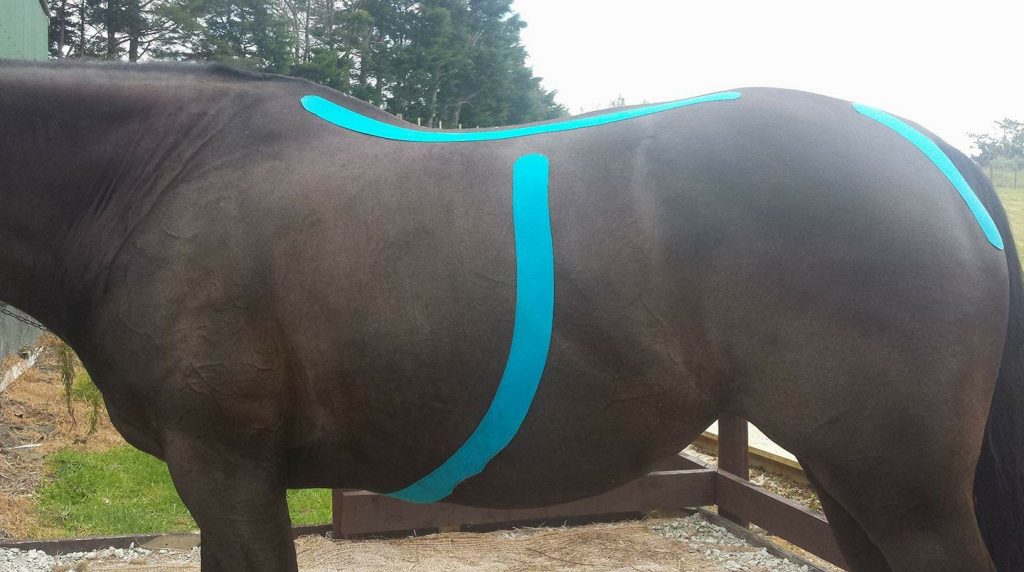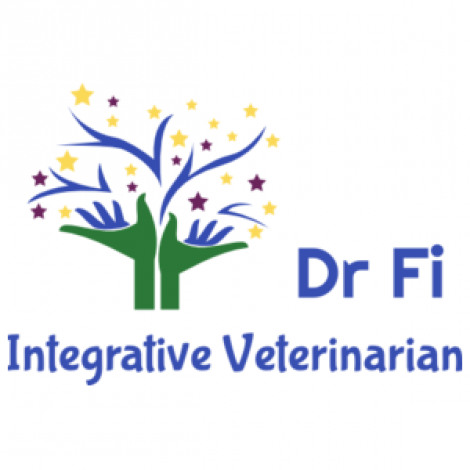This evening I had the pleasure of working with one of my client’s horses in hand. First she showed me the in hand work she had been doing with her beautiful 6 year old mare, whom she is wanting to sell due to a change in personal circumstances. I had treated the mare last week and upon reflection of things I had pointed out to her, my client asked me to return this week to try some kinesiotaping to help the mare re-acquaint herself with some of the body areas she was holding in tension – namely her topline muscles and her left hind.
Thanks to studying with Manolo, I could see what sequence of training routines were making the mare stiffer and less willing to give of herself. After taping her topline and diaphragm and upper semi-membranosus muscles bilaterally, we returned to the arena and I played with the mare myself. Initially I just walked around the outside of the arena, after a stretch of her left forelimb and massage of the left side of the neck and work on the spines of the wither and C6-C7 area, also on her left. By draping the end of the lunge whip over her neck, I stimulated the mare to wake up more. Here was something different for her, unknown, even intimidating to start with. But as I reassured her, she was a good girl and walked calmly beside her, she breathed out with her tapes, reminding her of parts of her body she had disconnected from.
As I played with her, asking for a little bend right, then straight then left, I felt the mare, breathe into parts of her body she had forgotten. She tried the same tired tricks of ‘I can’t possibly do that’, to which I quietly commanded, ‘yes you can’. I asked nicely twice and the third time, politely gave her an auditory reminder that I meant now, not sometime down the track, with the gentle whoosh of the end of the lunge whip behind her. She gave more energetically of her body, and in doing so, became enlivened in her trot. Her first canter to the right was rushing in one corner, a habit she quickly learnt to repeat in the same corner, but for the time being I was happy she was going forward, so did not correct her. Instead, I observed the 3 canter circles she gave me with an almost 4 beat, stiff legged canter. As she went around, she appeared to be relearning what her hind limbs could do. Although it looked awkward, she appeared to be softening with each circle so I let her continue. Then in the rushing corner, I asked for a trot transition. With each movement and moment of working, she seemed to be softening and connecting with her own body, in ways she had not realised for a while.
We went back to some bending and a little shoulder fore at the walk in each direction, then stopped and gave her much verbal praise and patting. As she set off again her rhythm became more even and she found she could change tempo within the trot. With each praise, she seemed to enjoy the work more and more. Her next canter was vastly different, and her trot showed energetic movement and rhythm in her hind legs I had not seen from her before. As her owner could visibly see the softening and change in her body, she became eager to have a turn, playing again with her mare. As they reconnected in a different way, to usual, it was like watching a dance unfold. Instead of nagging for more impulsion and energy from the mare, the horse seemed more willing to give it. It was a pleasure to see such a transformation before my eyes, and a reminder that this in hand work is subtle, yet so powerful, for the benefit of horse’s bodies. I was thanked many times before leaving and both mare and owner had a newly found glow and the excitement in the owner’s eyes, knowing what and how she could work on in the coming weeks was thanks enough. The gratitude and enlivenment left me feeling contented and grateful for the lessons Manolo has shared. Thank you!


